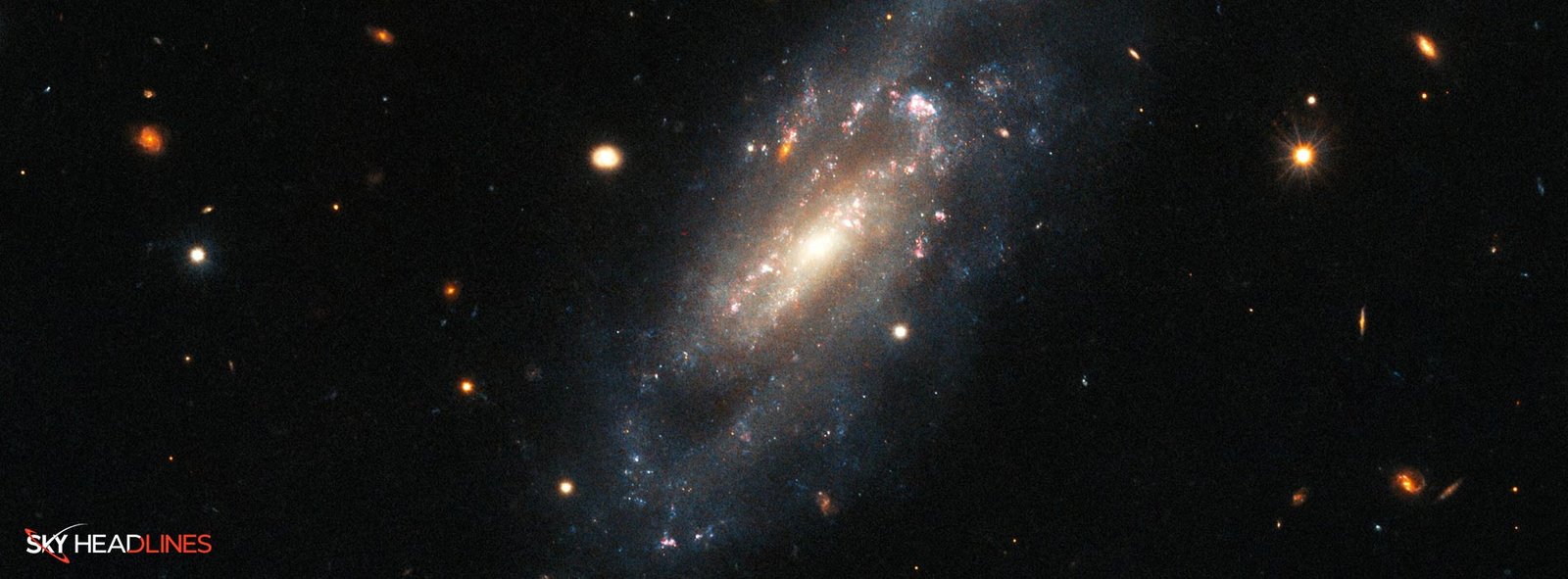In the solar system. to observe the existence of certain stunning spiral galaxies, tools like telescopes are used.
How did Hubble revolutionize the astronomical world with stunning spiral galaxies?
The greatest important development in astronomy until Galileo’s telescope occurred with the launch and activation of Hubble in April 1990. Our understanding of cosmic phenomena and our standing therein has changed significantly over the course of over two decades of operations and 5 maintenance expeditions. The researchers said;
“Robotic telescopes allow us to detect everything from unexpected asteroids to rare, unpredictable supernovae and can identify intriguing objects that can then be investigated in more detail by powerful telescopes such as Hubble.”
How can the appearance of spiral galaxies be explained?
Featuring yellowish swells in the middle, stunning spiral galaxies look like straight blue-white discs of celestial bodies, gases, and dust. The two distinct categories of these galaxies are regular spirals and barred spirals. Within a spiral galaxy, the spinning disc is surrounded by spiral ‘arms’ that extend outward from a compact center region. A galaxy with spiral arms is the Milky Way. Galaxies can be divided into four categories: spiral, barred spiral, elliptical, and erratic.
Astrophysical research conducted by Lord Rosse led to the identification of several nebulae as stunning spiral galaxies.
Discovery of a stunning spiral, the UGC 11860
In a photograph captured by NASA/ESA Hubble Space Telescope, the stunning spiral galaxy UGC 11860 appears suspended peacefully among a landscape of distant galaxies. The galaxy UGC 11860, which is located in the celestial Pegasus and is about 184 million light-years out of reach, deceives the eye with its peaceful demeanor by recently hosting a nearly unfathomably intense stellar outburst.
Following operating successfully for more than three decades, the space observatory from NASA and the European Space Agency continues to operate leading to important findings. Beth Biller, an astronomer at the University of Edinburgh in the UK and leader of a council that represents researchers who use Hubble, believes there continues to be a tonne of work to be performed with Hubble.
Also, 2014 saw the detection of an eruption of supernovae in stunning spiral UGC 11860, the horrifically violent conclusion of a giant star’s lifespan. Hubble’s Wide Field Camera 3 was utilized by researchers to explore the following events and examine the continuing repercussions of this massive cosmic explosion.
Hubble astronomers said.
“The untroubled appearance of UGC 11860 can be deceiving,”
“This galaxy recently played host to an almost unimaginably energetic stellar explosion.”
What was the chemical makeup of the spiral galaxy, UGC 11860?
To learn more about the star systems that ultimately perish in supernovae, one team investigated a stunning spiral galaxy, the UGC 11860. The elements that reside spanning silicon and nickel on the periodic chart were mostly created by extremely intense mechanisms during exploding supernovae. In order to figure out the number of chemical elements on Earth that came to be, it is crucial to comprehend the impact of the mass numbers and compositional makeup of the precursor star constellations.
Stunning spiral stars thus, are discovered by NASA’s Hubble, opening an entrance into the early universe. Nature is full of spirals, starting with the swirl of a cyclone to the immense expanses of spiral galaxies throughout our cosmos to the pinwheel-shaped protoplanetary discs surrounding young stars.
Additionally, Hubble has been utilized by astronomers from Arizona University and around the world to look into far-off galaxies and gain a deeper understanding of both the distant past and the distant future of our evolving cosmos.





